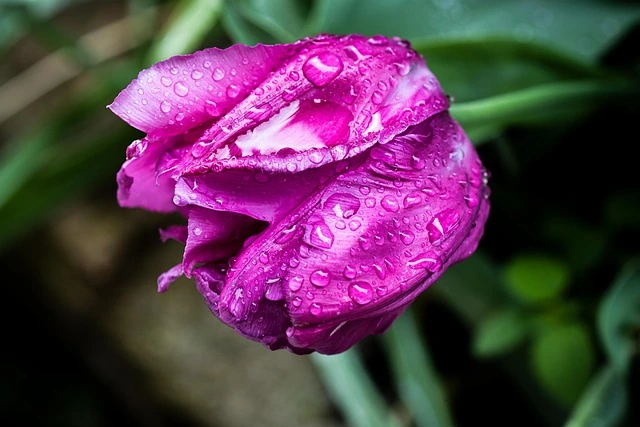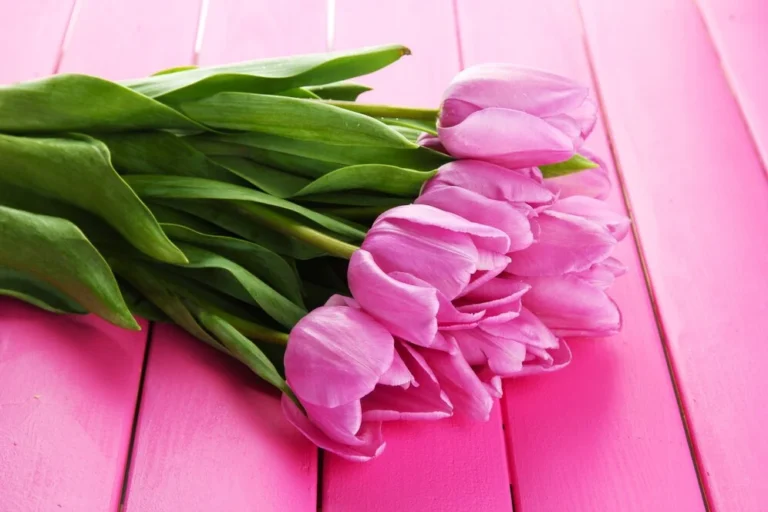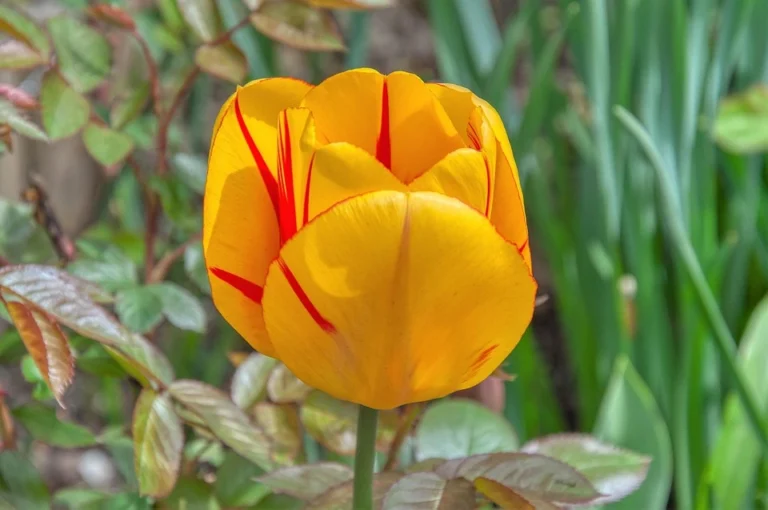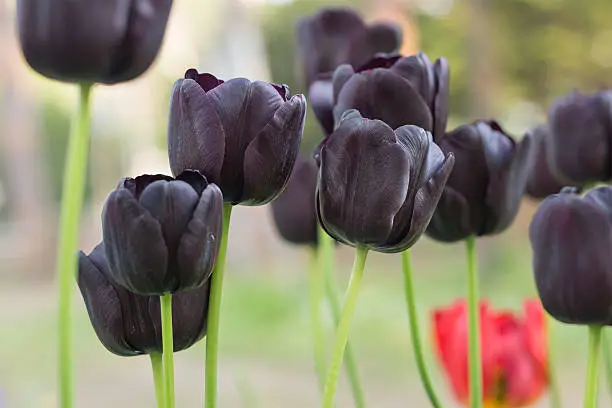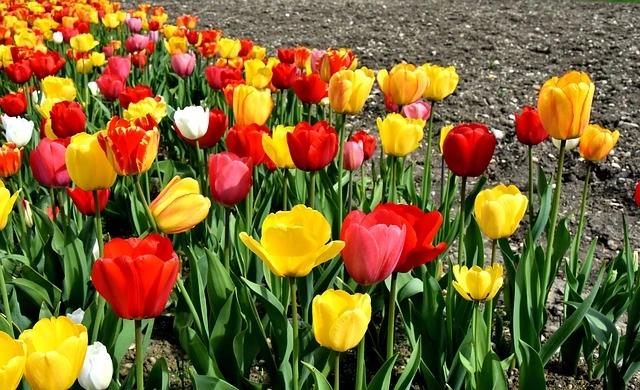Purple Tulips: Cultivating Nature’s Royal Blooms in Your Garden
Table of Contents
Have you ever wondered why purple tulips consistently rank among the top flowering bulbs chosen by experienced gardeners, with over 65% of professional landscapers including them in their spring display designs? These regal beauties aren’t just visually striking; they’re surprisingly versatile performers in gardens across various climate zones, offering both beginning and seasoned gardeners a reliable burst of spring color with minimal maintenance requirements.
The Allure of Purple Tulips
Purple tulips have fascinated garden enthusiasts for centuries, dating back to their introduction to Europe from the Ottoman Empire in the 16th century. Their rich, jewel-toned petals range from soft lavender to deep aubergine, creating a sophisticated focal point in any garden design. Unlike their red or yellow counterparts, purple tulips carry symbolic meanings of royalty, admiration, and rebirth, making them perfect not only for gardens but also for meaningful gift arrangements.
The botanical diversity within purple tulip varieties offers something for every gardener. From the classic Purple Prince with its robust nature to the frilly-edged Blue Parrot variety that adds textural interest, these flowers can serve as either dramatic standalone specimens or complementary companions to other spring-blooming plants like daffodils and hyacinths.
Top Purple Tulip Varieties for Your Garden
When selecting purple tulips for your garden, consider these outstanding performers:
Queen of Night: Often described as the darkest tulip in existence, this variety produces deep purple-black blooms that create stunning contrast against lighter plants. They typically flower in mid to late spring and reach heights of 20-24 inches.
Purple Flag: A reliable performer with vibrant purple petals complemented by a subtle blue base. These mid-season bloomers stand 18-20 inches tall and work beautifully in mass plantings.
Negrita: Featuring consistent deep purple blooms with a glossy finish, Negrita tulips are prized for their excellent vase life and sturdy stems that resist toppling in spring rains.
Bleu Aimable: Despite its name, this heirloom variety displays lovely lavender-purple hues with softly feathered edges. It flowers slightly later than other varieties, extending your tulip season.
Planting Purple Tulips for Maximum Impact
Success with purple tulips begins with proper planting techniques. These bulbs perform best when planted in fall, approximately 6-8 weeks before your region’s first hard frost. This timing allows them to establish root systems before winter dormancy.
Select a planting location that receives full sun to partial shade. Purple tulips particularly benefit from strong light, which intensifies their color pigmentation. The soil should be well-draining with a neutral to slightly acidic pH (6.0-7.0). Heavy clay soils can be amended with compost to improve drainage and prevent bulb rot.
Plant purple tulip bulbs at a depth of approximately three times their height, typically 6-8 inches deep. Position the pointed end facing upward and space bulbs 4-6 inches apart. For dramatic visual impact, plant in clusters of 7-12 bulbs rather than single rows.
Seasonal Care for Purple Tulips
While purple tulips are relatively low-maintenance, following these seasonal care guidelines will maximize their performance:
Fall: After planting, water thoroughly to initiate root growth. Apply a 2-inch layer of mulch after the ground freezes to regulate soil temperature and prevent frost heaving.
Spring: As growth emerges, provide moderate watering during dry periods. Apply a balanced, low-nitrogen fertilizer when shoots first appear. Remove spent blooms promptly but allow foliage to yellow and wither naturally, as this process recharges the bulb for next year’s display.
Summer: Purple tulips enter dormancy during summer months. Avoid excessive watering during this period to prevent bulb rot.
Winter: In zones 3-7, established purple tulips typically require no special winter protection beyond the initial fall mulching.
Companion Planting with Purple Tulips
Purple tulips truly shine when strategically paired with complementary plants. Consider these combinations:
- Plant among emerging hostas or daylilies, which will later conceal the tulips’ fading foliage
- Combine with yellow daffodils or white muscari for dramatic color contrast
- Underplant with low-growing forget-me-nots or creeping phlox to create layered garden interest
Common Challenges with Purple Tulips
Even these reliable performers can face occasional challenges. Recognize and address these common issues:
Shortened Bloom Lifespan: Many purple tulip varieties are excellent performers in their first year but may decline in subsequent seasons. For consistent displays, treat as annuals in warmer climates or select species tulips for perennialization.
Animal Damage: Squirrels, chipmunks, and deer find tulip bulbs and blooms delicious. Deter them by planting bulbs in wire cages or interplanting with naturally repellent companions like alliums or daffodils.
Disease Prevention: Purple tulips can occasionally develop botrytis blight in damp conditions. Ensure adequate spacing between plants for air circulation and avoid overhead watering.

Frequently Asked Questions About Purple Tulips
Are purple tulips perennial or do they need replanting annually? Most hybrid purple tulips perform best in their first year, with diminishing returns in subsequent seasons. For reliable perennial performance, choose species varieties like Tulipa humilis ‘Persian Pearl’ or replant fresh bulbs annually.
When is the best time to cut purple tulips for arrangements? Harvest purple tulips for indoor displays when the buds are colored but still closed. Cut stems at an angle early in the morning and place immediately in cool water. For longest vase life, keep arrangements away from fruit bowls and direct sunlight.
Can I grow purple tulips in containers? Absolutely! Purple tulips excel in container gardens. Choose varieties with heights proportional to your container size, plant in well-draining potting mix, and position pots where they’ll receive adequate winter chill to encourage spring blooming.
Do purple tulips require special fertilization? Purple tulips benefit from a balanced, low-nitrogen fertilizer (such as 5-10-10) applied when shoots first emerge in spring. Avoid high-nitrogen formulations, which promote lush foliage at the expense of flowering.
What causes purple tulips to change color over time? Some purple tulip varieties may appear to “break” or change color pattern due to genetic factors or viral influences. While historically prized, color breaking often indicates a virus that eventually weakens the plant. Remove and dispose of affected bulbs to protect your tulip collection.
By incorporating these purple tulip varieties and cultivation techniques into your garden, you’ll create a spring display that combines royal elegance with practical performance. Whether used as bold focal points or subtle color complements, these beloved blooms continue to earn their place in gardens worldwide.
